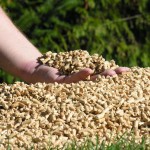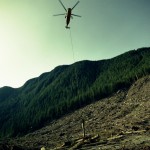2nd in a series of releases relating to the XXIII IUFRO World Congress
(Vienna, 21 December 2009) – The forest sector has huge potential to mitigate the effects of climate change at low costs. The reason is that trees provide one proven way to remove CO2 from the atmosphere.
That opportunity makes it critically important to understand exactly which forest-related activities can contribute to mitigation benefits. Such understanding will then lead to a science-based dialogue about which activities contribute to climate change mitigation and which may make it worse. That will then lead to tools to support informed, responsible policy development.
“Reduction of emissions from deforestation and degradation is the most important first step, because it has an immediate impact,” says Dr. Werner Kurz, of the Canadian Forest Service, who notes that in the ‘90s, deforestation emissions globally were found to contribute an amount equivalent to about 20% of fossil fuel emissions.
Dr. Kurz, who will coordinate a session to explore the potential of forest sector activities to mitigate climate change at the 2010 IUFRO World Forestry Congress in Seoul, adds: “Biomass derived from forests contributes to meeting society’s demands for timber, fibre and energy. But further analyses are needed to help identify and implement the climate mitigation activities that deliver the greatest climate mitigation benefits.”
The issues are challenging and will foster lively, heated, discussion. As an example, some argue for conservation – keep the carbon in the forest because today’s carbon is what matters in the atmosphere. Others argue, among other things, using harvested biomass to store carbon in wood products and to use biomass from harvest residues or bioenergy plantations as sources of bioenergy to substitute for fossil fuels. To design an effective climate mitigation portfolio, carbon costs and benefits and their dynamics must be quantified over time, Kurz says.





Leave a Reply